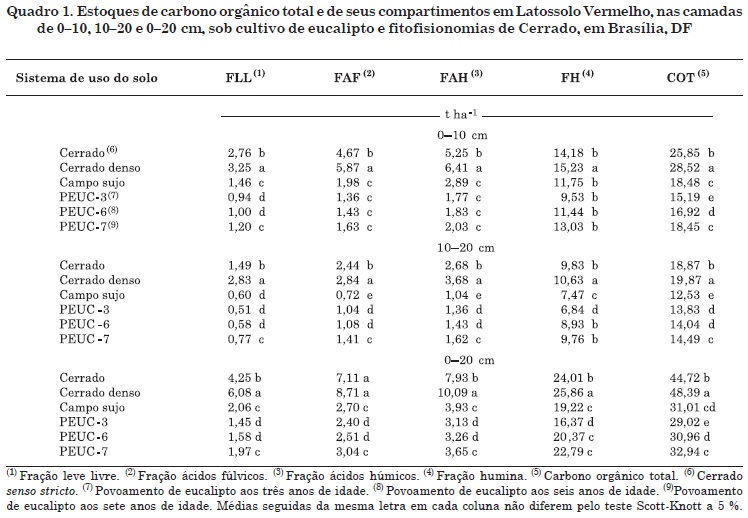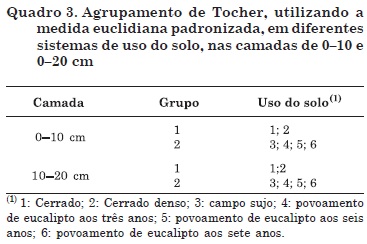This study aimed to evaluate the impact of the eucalypt cultivation at different ages and of phytophysiognomy of the cerrado biome on total organic C stocks and its pools and to verify which one is more sensitive to land use changes. The study was conducted in Brasilia, Distrito Federal, in a Yellow Latosol under eucalyptus after three (PEUC-3), six (PEUC-6) and seven (PEUC-7) years of cultivation, and under savannah strict sensu, dense savannah and open grassland with scattered shrubs. In these areas, soil samples from the 0-10 and 10-20 cm layers were collected to determine the stocks of total organic carbon (TOC), free light fraction C (FLF) and humic fractions C (fulvic acids - FAF; humic acids - HAF and humin - HF). In both soil layers, higher TOC stocks and C pools were observed in areas under dense savannah and savannah strict sensu than in those under eucalyptus; there was a recovery of soil C stocks with increasing cultivation time of eucalyptus. C-FLF followed by C-FAF and C-HAF were considered most sensitive to land use changes, since the reductions in these stocks were higher than observed for TOC and C-HF. Multivariate analysis, which considers all soil carbon pools simultaneously, showed higher similarity between dense savannah and savannah strict sensu and as well as between open grassland, PEUC-3, PEUC-6 and PEUC-7 in the 0-10 cm and 10-20 cm layers.
soil organic matter; humic substances; savannah vegetation; land use




